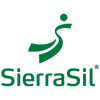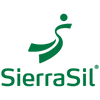Blog
To use a tennis ball for sore muscle relief, to relieve your sore back, calf muscles, feet, hands, shoulders, and thighs takes just a few minutes a day. Thanks to the power of myofascial release, a tennis ball is your...
Continue reading
You wake up in the morning and your knees are creaky and sore. You have noticed swelling and redness around your wrists and knees. You feel like your knees and fingers don’t move as easily as they once did. These...
Continue reading
To have an active summer, all you need to do is to just do it. Yes, that’s right, find that sport, hobby, or activity that you enjoy and get out and do it. You don’t need to run 10 miles...
Continue reading
Delicious food. Amazing vistas. Cultural exploration. Relaxing or thrill-seeking. New experiences. Life-changing accomplishments. Bucket list goals. Eye-opening and mind-expanding. Yes, there is nothing quite like travel. The gift and beauty of travel is that it allows us to open our...
Continue reading



